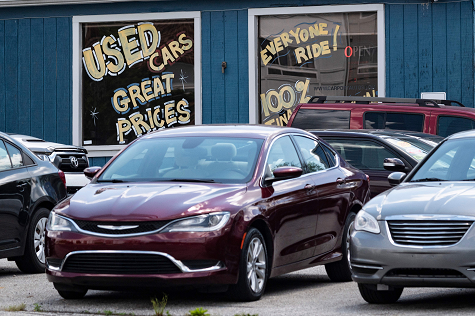Section 9-3: Purchasing a Used Vehicle
Section 9-3: Purchasing a Used Vehicle
Overview


Purchasing a used vehicle can be a smart financial decision, but it requires careful research and consideration to ensure you're getting a reliable and well-maintained vehicle. Here's a step-by-step guide to help you navigate the process:
Set a Budget: Determine how much you can afford to spend on a used vehicle, considering factors such as purchase price, taxes, registration fees, insurance, and potential maintenance costs. Be realistic about what you can comfortably afford.
Research: Research different makes and models of used vehicles that fit your needs, preferences, and budget. Consider factors such as mileage, age, fuel efficiency, reliability, safety ratings, and available features. Online resources such as automotive websites, consumer reviews, and reliability ratings can be helpful in your research.
Locate Vehicles: Once you've narrowed down your options, start looking for used vehicles for sale in your area. You can search online through websites like Autotrader, Cars.com, Craigslist, or dealership websites. You can also check local classified ads or visit used car dealerships.
Inspect the Vehicle: Before purchasing a used vehicle, it's crucial to inspect it thoroughly to assess its condition and identify any potential issues. If you're not knowledgeable about cars, consider hiring a mechanic to perform a pre-purchase inspection. Pay attention to the vehicle's exterior and interior condition, engine performance, brakes, tires, suspension, and any signs of damage or wear.
Check Vehicle History: Obtain the vehicle's history report using its vehicle identification number (VIN). Services like Carfax or AutoCheck provide comprehensive reports that include information about past accidents, title status, service records, and odometer readings. Avoid vehicles with a history of significant accidents, flood damage, or other serious issues.
Test Drive: Take the vehicle for a test drive to evaluate its performance and comfort. Pay attention to factors such as acceleration, braking, steering, noise levels, and overall driving experience. Test driving the vehicle will also give you an opportunity to detect any potential mechanical problems.
Negotiate the Price: Once you've found a used vehicle that meets your criteria and passes inspection, it's time to negotiate the price. Research the market value of similar vehicles in your area to determine a fair price. Be prepared to negotiate with the seller or dealership to reach a mutually acceptable price.
Complete the Transaction: Once you've agreed on a price, review and sign all necessary paperwork, including the bill of sale, title transfer, and any financing documents if applicable. Ensure that all terms and conditions are clearly outlined and that you understand them before finalizing the transaction.
Obtain Insurance and Registration: Before driving the vehicle off the lot, make sure you have insurance coverage and obtain the necessary registration documents. Contact your insurance provider to add the vehicle to your policy and visit your local Department of Motor Vehicles (DMV) to register the vehicle in your name.
Maintenance and Care: After purchasing the used vehicle, make sure to follow the manufacturer's recommended maintenance schedule and take care of any necessary repairs or servicing. Regular maintenance will help keep the vehicle running smoothly and prolong its lifespan.
By following these steps and exercising due diligence, you can find a quality used vehicle that meets your needs and provides reliable transportation for years to come.
Online Textbook Read Section 9-3: (Purchasing a Used Vehicle)
